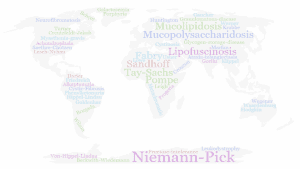CONTENT AVAILABLE ONLY IN ENGLISH
How can bacteria protect our crops? 7.400 million, this is the estimated number of people inhabiting the earth today. Different projections predict that this number will continue to rise and the world’s population may reach 9.500 million people by 2050.
These astronomical numbers make us think about the sustainability of this situation over time. Will the earth be able to produce food for everyone? To improve the capacity of our planet to produce the resources necessary is a major issue discussed in international forums by the world’s leading economies. One of the key points arisen is the development of a sustainable agriculture. This new agriculture has to be able not only to meet the food needs of this growing population but to do so while respecting our planet.Therefore, it is important that,among other aspects, agriculture does not result in soil erosion or groundwater contamination. This is unfortunately the case with the products currently used to enhance plant growth and to protect crops: fertilizers, pesticides, etc.
Different organisms known as plant pathogens or phytopathogens are able to infect and cause disease in crops. The infection can cause the death or drastically reduce the crop production. Although these pathogens may be of animal origin (worms or insects, for example), in many other cases they are fungi or bacteria. Crop infections lead to the loss of millions of dollar every year worldwide. Thus, the use of fertilizers and pest control products is still required to maintain a high production of supplies for the growing population. However, it should also be imperative for these new agriculture to become environmentally friendly.
Currently, the majority of products used in agriculture do not meet these requirements and many of them are highly contaminant chemicals. What other alternatives are there? Besides pathogens causing infections, there are beneficial microorganisms also present in the soils. These microorganisms play an important role as a sustainable alternative for the chemical products since they are not pollutants. These microorganisms can be fungi and bacteria that promote plant growth and/or protect the crops from the deleterious effect of pests. The latest are known as biological control agents or agents of biocontrol.

Pseudomonas putida is one of the species of bacteria that lives in the soil and has both the ability to support the growth of different crops, and to protect plants from the attack of different pathogens. The use of chemical pesticides in extensive farming has decreased the population of these beneficial bacteria that have to be added to the soil as commercial preparations of microorganisms. Many of these preparations include Pseudomonas putida as its main component and are beginning to be used by some farmers with very positive effects. These encouraging results could improve with the study of the mechanisms ofbiocontrol that these beneficial bacteria use to fight the pathogens. This knowledge will allow us to understand the functioning of the mechanism in depth to then be able to adapt it for an optimal use of this «green» (environmentally friendly) biopesticide.
What mechanisms of bacterial biocontrol do we know so far? Mostly, these biocontrol agentsinhibit the pathogen growth andprevent the infection of the plant and thus the development of the disease. This growth inhibition may occur through competition for the same nutrients or through the release of toxic compoundsknown as bacteriocins to the soil.
Recently, it has been identified a novel mechanism of competition between bacteria: the type 6 secretion system (T6SS). The T6SS is a molecular weapon with the shape of a syringe designed to inject toxins (poisons) within other bacteria in order to annihilate them. To study the role of this secretion system in the biocontrol properties of Pseudomonas, we used a strain of P. putida which has been widely studied, and whose genome is completely known since 2002 (P. putida KT2440). This strain contains three T6SSs, thus is, three different weapons capable of secreting at least 10 different types of toxins. The bacteria can kill different plant pathogens using these systems. All of these pathogens are extremely relevant for the lethality of the infections caused in economically-important crops such as potato or cauliflower (Bernal., et al 2017). Knowing the different toxins secreted by P. putida and their specificities can help us to design biocontrol strategies appropriate for the type of pathogen and the needs of each crop. The development of biopesticides «a la carte» will become a very powerful tool to protect our crops in an efficient and sustainable manner avoiding the use of chemical pesticides and thereby helping the planet to supply us while we protect our planet.
By Dr Patricia Bernal, Marie Curie Fellow, MRC Centre for Molecular Bacteriology and Infection, Department of Life Sciences, Imperial College London. SRUK London Constituency






